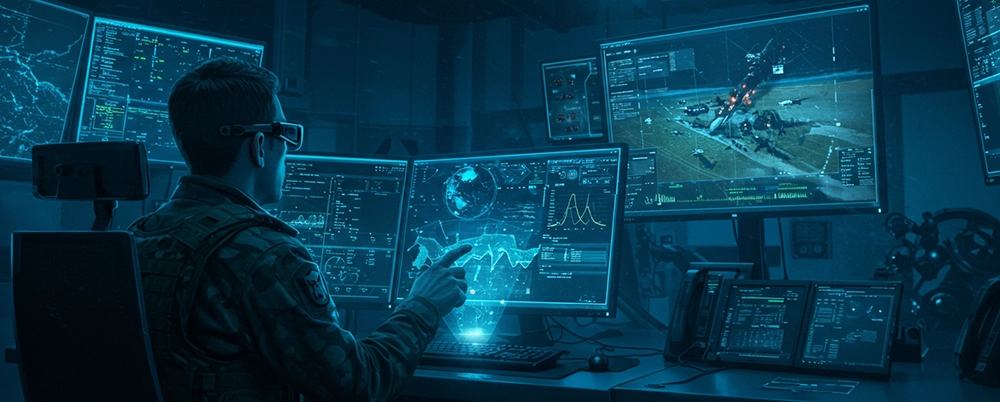
🤖 Artificial Intelligence in the Military: Shaping the Future of Warfare
🔍 What is Military AI?
Artificial Intelligence (AI) in the military refers to the use of machine learning, deep learning, and automation technologies to enhance defense capabilities across land, air, sea, space, and cyberspace.
⚔️ Key Military Applications of AI
1. Autonomous Combat Drones & UAVs
-
AI controls unmanned aerial vehicles (UAVs) for surveillance, target tracking, and even offensive strikes.
-
Example:
-
Bayraktar TB3 (Turkey), MQ-9 Reaper (USA), Shahed-136 (Iran).
-
-
Benefits: Reduced pilot risk, long endurance, precise targeting.
2. AI-Powered Missile Defense Systems
-
AI systems manage complex missile interception decisions in real-time.
-
Example:
-
Israel’s Iron Dome and Arrow 3 systems incorporate AI to calculate projectile trajectories and impact zones.
-
-
Benefits: Higher interception rates, faster reaction times against saturation attacks.
3. Cybersecurity & Cyberwarfare
-
AI-driven systems monitor and respond to cyberattacks autonomously.
-
Example:
-
The U.S. and NATO use AI to detect malware, phishing, and intrusion attempts at high speed.
-
-
Benefits: Instant defense against state-sponsored cyber threats.
4. Battlefield Robotics
-
Ground robots equipped with AI for mine clearance, reconnaissance, and logistics.
-
Example:
-
Russia’s Uran-9, an unmanned ground combat vehicle.
-
-
Benefits: Safer operations in hazardous zones, remote-controlled combat.
5. Decision Support & Strategic Analysis
-
AI helps commanders analyze vast amounts of battlefield data for real-time decisions.
-
Example:
-
AI-assisted war games and simulations used by the U.S. Pentagon and Chinese PLA.
-
-
Benefits: Faster threat assessment, predictive analytics on enemy behavior.
6. Swarm Technology
-
AI enables fleets of small drones or ships to act as coordinated "swarms".
-
Example:
-
DARPA’s "OFFSET" program in the U.S.
-
-
Benefits: Overwhelming enemy defenses, reduced cost per unit.
7. Satellite & Space Surveillance
-
AI analyzes satellite data for enemy movements, missile launches, and space object tracking.
-
Example:
-
AI-processed satellite imagery for hypersonic missile launch detection.
-
⚠️ Risks & Ethical Challenges
-
Autonomous Lethal Systems: Could AI weapons make independent kill decisions?
-
Cyber Miscalculation: AI cyber tools may accidentally trigger conflicts.
-
Data Poisoning: Enemy manipulation of AI datasets.
-
International Laws: Lack of regulations on AI warfare increases the risk of escalation.
🌐 Nations Leading Military AI Development
| Country | Focus Area | Notable Programs |
|---|---|---|
| USA | Drones, Cyber Defense, Battlefield AI | DARPA OFFSET, Project Maven |
| China | AI war games, Hypersonic missile tracking | PLA Smart Warfare Initiative |
| Russia | Autonomous tanks, drones, electronic warfare | Uran-9, AI-guided missile units |
| Israel | Missile Defense, Autonomous UAVs | Iron Dome AI, Harop drones |
| Iran | Drone swarms, AI missile guidance | Shahed UAV programs |
🔮 The Future of Military AI
Experts predict AI will:
-
Make fully autonomous air and sea combat systems operational by 2030.
-
Lead to the deployment of hypersonic missile defense systems.
-
Require new international arms control treaties for AI-based weapons.
🎯 Conclusion: AI as a Double-Edged Sword
While AI enhances military power, it also raises the stakes for errors, accidents, and escalation. Nations are racing to leverage AI advantages while managing its profound risks in global security.